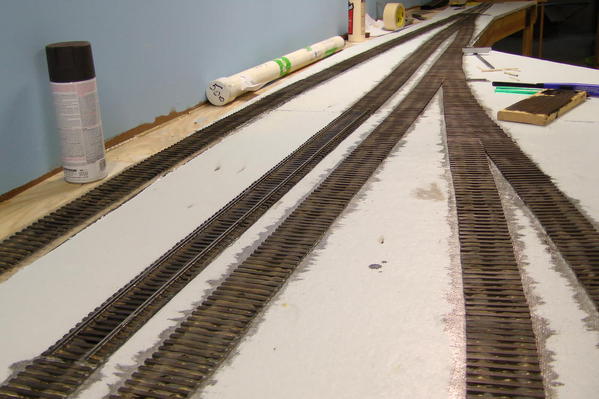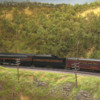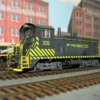Will
It is good to know that you are thinking now about what you want in the long run. What you like may change over time but you can learn a lot along the way.
The strongest case for three rail scale can probably be made for anyone interested in medium and large steam. The curve requirements for 2 rail steam are to big for many. Going with a 3 rail approach to scale model railroading allows layout designs to incorporate 36 in radius curves wherever it may be of advantage and still know that all locomotives will be able to operate through them.
If you are not interested in operating steam then you can have more design flexibility. Six axle diesels may not be a design limitation, it might be your rolling stock. Do you want to operate auto racks or 89 foot flat cars with body mounted couplers and couple them to shorter cars? That might be your defining operating restriction. There is no law that says 2 rail cars have to have body mounted couplers. Many HO cars have been built with truck mounted couplers. The trade offs are your to assess. If you can live without either 89 footers cars or body mounted couplers you might be able to run 2 rail equipment on 36 to 40 inch radius curves and #5 switches.
Careful and creative planning is essential to the design of a satisfying layout in any scale. John Armstrong's Track Planning for Realistic Operation is an excellent reference and has inspired many, many designs. I have had the good fortune to participate in the construction of a layout that originated with a preliminary design by John Armstrong. The footprint of the layout is almost exactly what Mr. Armstrong conceived. He had a wonderful sense for the utilization of space and the flow of a layout through a room. The track plan elements are quite different from the preliminary design and come from the layout owners evolving desire to model specific locations as well as operational considerations. Some of the operational considerations were defined by locomotives and rolling stock. The layout features quite a fleet of scale passenger cars. A 10 car passenger set with A-B-A PAs or E Units became the defining limit on train length and therefore siding length. A 300 inch long siding will allow for 10 car passenger trains or 20 car freight trains (with an average 40 foot car length) to fit in a siding. That freight train length then set the length for the arrival/departure yard. The classification yard is used to make and break trains coming from and going out to industries and interchange points on the main lines and branches. The layout and its locomotive and car fleet have been built to provide a compressed but still realistic operational scheme for manifest freight railroading from the 40s or 50s and it can keep a good sized crew hopping at operating sessions.
Since you are interested in modern intermodal and coal operations I would suggest considering what parts of those operations you would like to depict. Do you want to have a dockside intermodal facility at a deep water port and a flood loader with unit trains that turn on a balloon track at a western strip mine? If so, put a great deal of thought into how to model those convincingly on a compressed scale. Or, think about modeling an inland truck to rail ramp and a carload coal mine. And where will those containers and coal cars go? A city terminal? A power plant? An export facility? Or, do you only want to model the main line haul with either the origin or destination or both off line? Perhaps a staging yard on or off scene could model a unit train crew change location where cars might be inspected and locomotives serviced but little or no switching takes place. How long a train do you need to get a sense of length in the space you have? Will 300 inches give a sense of a long freight? Will 200 or 120 inches do it in a smaller space? If you go longer than 300 inches and/or have mountain grades what will that mean for your motive power requirements and what will that mean for your control system and power supplies? Can your locomotives and control system model DPUs? How will all those considerations change if comparing O to HO?
Fortunately thinking is still free and doodling or playing around with electronic designs only cost as much as a pencil and paper or software. Get out and see as many real operations and layouts as you can. If you have a few things you are sure that you want on a future layout go ahead an get them if the opportunity presents itself. Build structures, especially if they fit in as the origin or destination for cars you like. I have heard Steve Brenneisen say that the layouts that provide lasting enjoyment are the one that have a purpose and are "model transportation systems." If you can build a model transportation system in O scale you will likely be happy with it. 
Ted
P.S. AAAs flood loader and rotary car dumper rock! Take a look at them and consider fitting one or both into a layout. They look great and will keep a crew busy and a dispatcher or yardmaster hounding them to get the train turned. Unit train ops are all about utilization. 

















